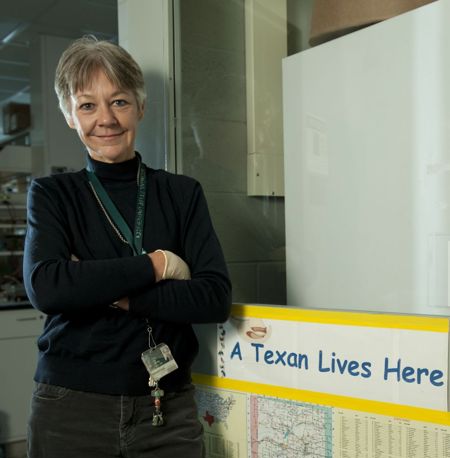Katheryn Meek
Professor, Department of Microbiology, Genetics, & Immunology
Faculty, Cell & Molecular Biology Program
Professor, BioMolecular Science Gateway
Location: 5190 Biomed Phys Sci
Phone: 517-884-5361
Email: kmeek@msu.edu
Bio
###Research DNA is the blueprint for all living organisms; accordingly, all organisms have evolved numerous mechanisms to ensure maintenance of an exact copy of their genomes for propagation. Given its importance to life, it is somewhat surprising that evolution has allowed DNA to be so labile, being quite sensitive to various forms of damage including oxidation, hydrolysis and methylation. My laboratory studies how DNA double strand breaks (DSBs) are repaired. Two major DNA repair pathways [non-homologous end joining (NHEJ) and homologous recombination (HR)] repair DSBs in all eukaryotes. NHEJ (the primary pathway in higher eukaryotes) is active throughout the cell cycle whereas HR is generally limited to S and G2 when a sister chromatid is available as a repair template. Emerging data provide strong evidence that an additional repair pathway(s) may also contribute to resolution of double strand breaks, especially in the absence of NHEJ, although the composition of this pathway as well as its role are not well understood. My laboratory focuses on a large serine/threonine protein kinase: the DNA dependent protein kinase (DNA-PK). DNA-PK initiates NHEJ because it recognizes DNA ends and then targets other NHEJ factors to the site of damage. Emerging data implicate DNA-PK as a central regulator of DNA end access; ongoing studies are investigating how DNA-PK regulates DNA end access (primarily via autophosphorylation) to promote end joining with minimal loss of sequence information. Additionally, it is becoming apparent that DNA-PK may affect other repair pathways, potentially by limiting access of DNA ends to other repair factors. This may have particularly important sequelae in species that express very high levels of DNA-PK and may thus partially explain why DNA-PK may play varying roles in different species.
